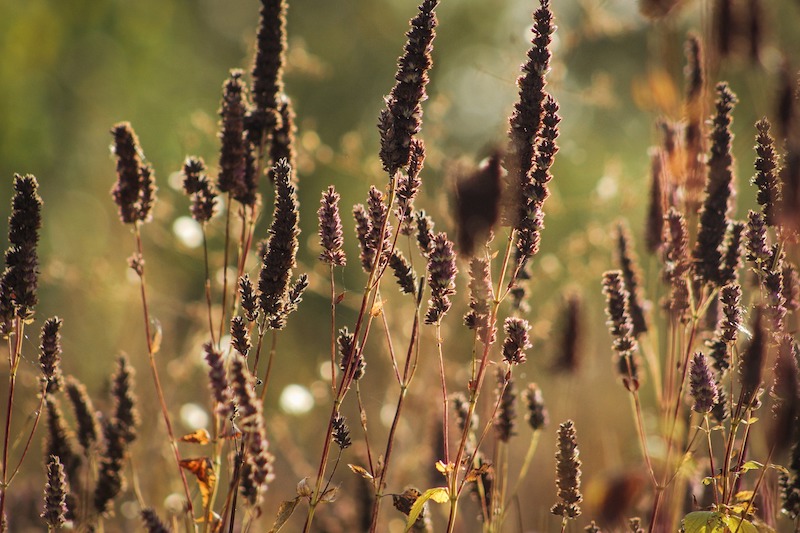Herbaceous perennials like Agastache are low maintenance. This perennial benefits from three types of pruning: pinching, deadheading, and fall cleanup. Pinching and deadheading both serve to encourage more and longer blooming, while the annual cleanup in the fall or early spring allows for new growth to emerge. Because herbaceous perennials renew all of their growth each year, any badly shaped or disease-stricken stems and foliage from the previous season can be confidently cut off without worrying about the future look of the plant.

When to Prune Agastache
The first pruning for Agastache is very early in the spring as the new growth is starting. Once the plants are 6-12 inches tall and have developed many branching stems, it is time to pinch back the growth tips. Pinching back involves snipping the stems back to a group of leaves. This encourages bushier growth from leaf and flower nodes further down the stems. It also makes the stems shorter and thicker. Pinching is often a once-a-year activity but can be done in mid-summer if the overall shape of the plants is too spindly and sparse.
Deadheading is the second type of pruning that benefits Agastache. Although Agastache keeps blooming with little encouragement, deadheading will extend the blooming period, often into early fall. Most varieties of Agastache are heavy self-seeders. While this is great for allowing this short-lived plant to persist from year to year, judicious deadheading through the season can reduce the amount of seed produced. Allowing only the last flush of blooms, usually from August on, to set seed will help to control the number of seedlings that will need pulling in the spring.
Lastly, Agastache should be cut back either in the fall or early spring to clean up the spent growth. All of the top growth will die back and should be cut to within 4-6 inches above the soil. Cutting back in the spring is easily done after the new green shoots emerge. Only remove any dead and brown plant material.
Why Prune Agastache
While Agastache will grow perfectly fine without any pruning, choosing to pinch, deadhead and cut back will help the plants stay more compact and tidy. Cutting back aids in removing any top growth that could be infected with pests or diseases during the growing season. Good garden hygiene helps to interrupt the life cycle of pests and disease, reducing the incidence of reinfection without having to resort to chemical sprays and full-spectrum pesticides.

How to Prune Agastache
Step 1 - Pinch out new shoots
In the spring after the new growth is 6-12 inches high, snip out the ends of stems to encourage bushier foliage and more flower stems. Cut back to just above a group of leaves, forcing buds farther down the stem into growth.
Step 2 - Deadhead spent flowers regularly
Cut back dead flower spikes as they go over. This encourages more flower buds to develop over the season while reducing the amount of seed the plant can produce. Gardeners that do not desire any reseeding should remove all flower spikes throughout the growing season. Allowing only the flowers late in the summer to develop seeds is a good compromise for reducing self-seeding while providing food for the wildlife in your garden through the winter.
Step 3 - Annual cut back
Cutting back all of the spent top growth is key to maintaining good garden hygiene if you have any problems with diseases or pests on your Agastache plants. Disposing of the affected plant material helps to disrupt the life cycles of most pests and diseases. Cutting back old top growth also allows the new shoots plenty of room to grow vigorously and healthy.
Agastache Pruning Tips
- Pinch back stem tips early in the spring for compact growth
- Deadhead to reduce the number of seeds produced
- Cut back the spent top growth to promote healthy growth the next season
 |
Author Robbin Small - Published 7-16-2023 |
